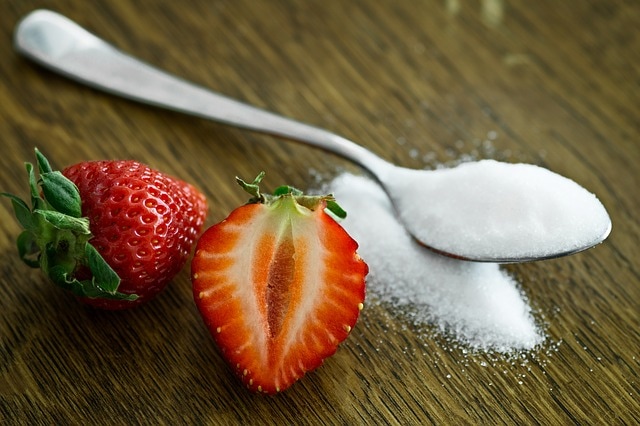Natural Sugars vs. Added Sugars6/11/2017 Natural Sugar VS Added Sugar
What is the difference and why it is important for you to know. Natural sugar is the kind of sugar contained in fruits, vegetables, and other plants. Most of these sugars occur as fructose, though glucose and sucrose can also be found in some foods. Examples: Apples, Honey, Bananas, Agave nectar, Pineapples, Carrots, Beets, etc. Added sugar is any type of sugar, be it white sugar (sucrose), molasses, honey, etc. that are placed in foods during preparation or processing, or added at the table. Examples: sodas, candy, cakes, cookies, pies, fruit drinks, desserts, dairy products, breakfast cereals, and processed foods. Addiction and Obesity Are you aware that sugar is a highly addictive substance? Yes, studies have shown it is more addicting than Heroin or Cocaine. It takes the body approximately 6 weeks to kick the sugar addiction. In a day in age, where it’s cheaper to purchase a “Happy Meal” versus a “Clean- all Natural Lean Meal” it’s no wonder why the percentage of children with obesity in the United States has more than tripled since the 1970s. Today, about one in five school-aged children (ages 6–19) has obesity. In the long term, childhood obesity also is associated with having obesity as an adult, which is linked to serious conditions and diseases such as heart disease, type 2 diabetes, metabolic syndrome, and several types of cancer. What are we doing wrong and why is it that about two-thirds of Americans are now overweight or obese? The average 12-ounce can of soda contains 10 teaspoons of sugar, and the average teenage boy consumes nearly three cans of sugary drinks a day. The American Heart Association (AHA) recommends limiting the amount of added sugars you consume to no more than half of your daily discretionary calories allowance. For most American women, that’s no more than 100 calories per day, or about 6 teaspoons of sugar. For men, it’s 150 calories per day, or about 9 teaspoons. What can we do? Take time to review Nutritional label on the back of a product for added sugars. They may appear under several names, many ending with the letters -ose, such as: § maltose § high fructose corn syrup § molasses § cane sugar § corn sweetener § raw sugar § syrup, honey § fruit juice concentrates In addition to managing your glucose intake by reviewing labels, exercising and making sure you reach for good sources of sugar can help stack the numbers in your favor. It's never too late to start! Don’t drink your sugar. Keep Fresh bowls of fruit around. Instill good eating habits in our children. Lead by example, more fruits and vegetables, less oily and fried foods. Remember this simple rule: NATURAL SUGARS occurring in fruits, vegetables and dairy are OKAY but SUGARS removed from their original source and ADDED to foods, well this we need to be cautious of. Frankie Results
Certified Fitness / Nutrition Coach Archives
June 2020
Categories |


 RSS Feed
RSS Feed